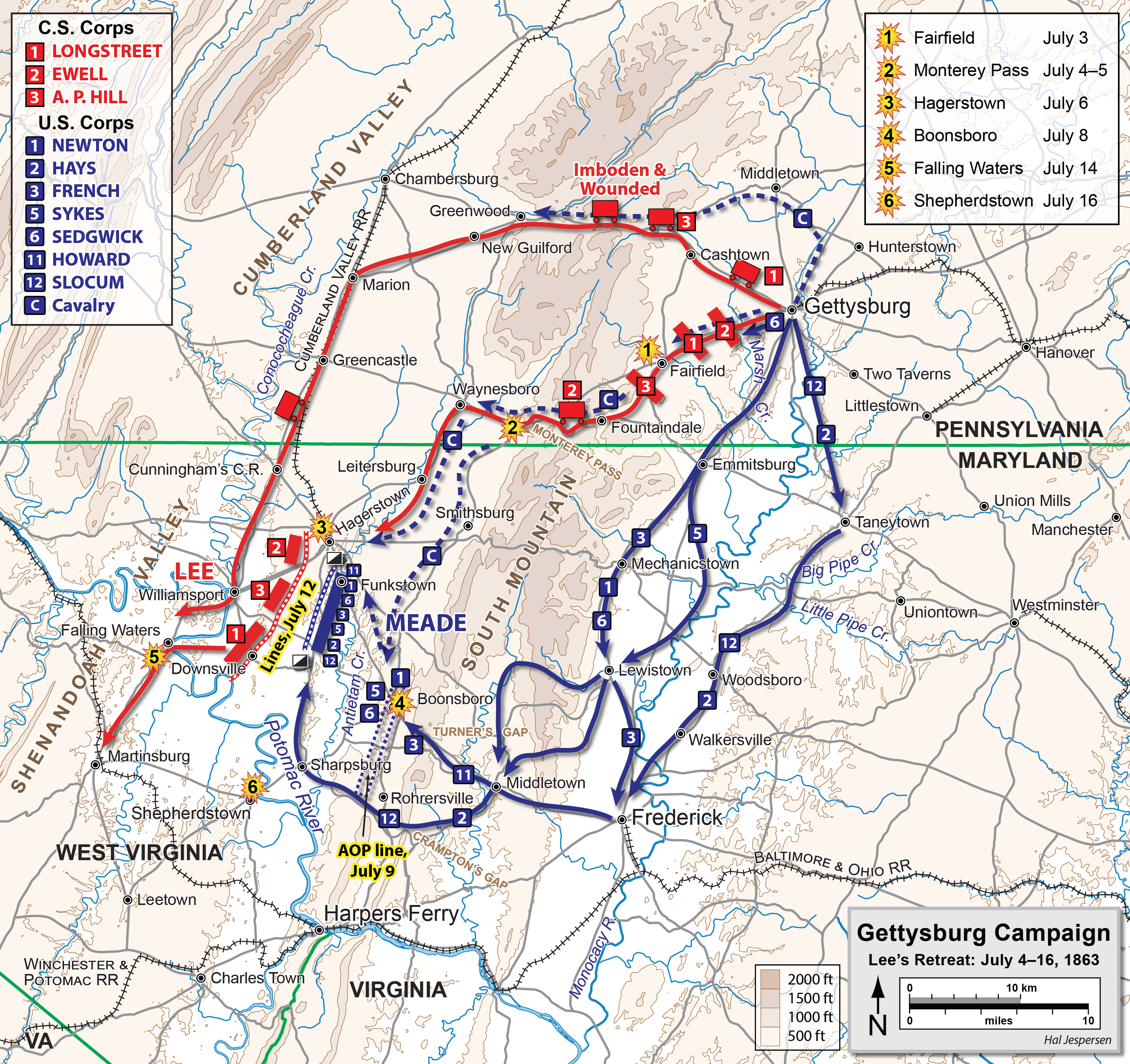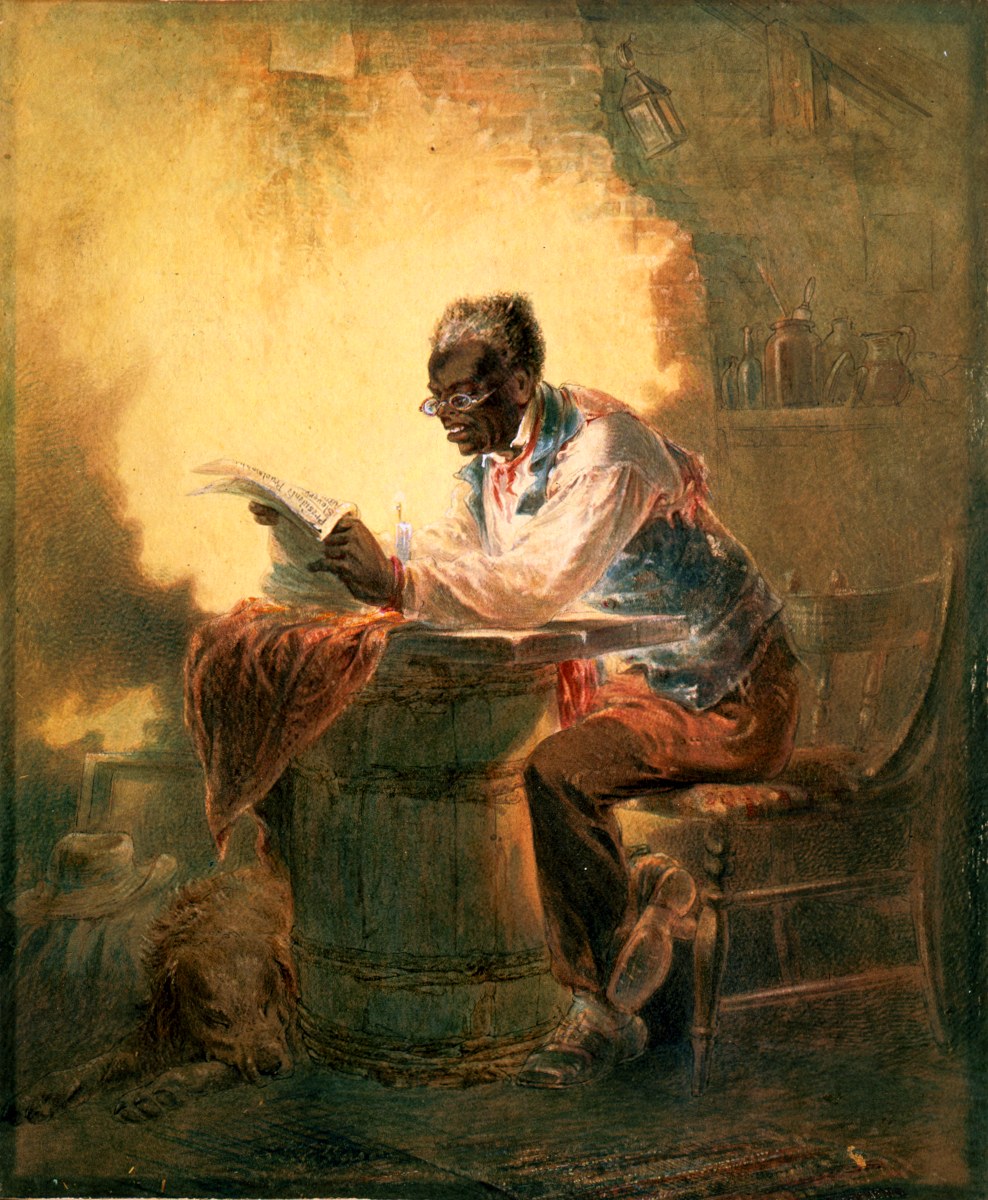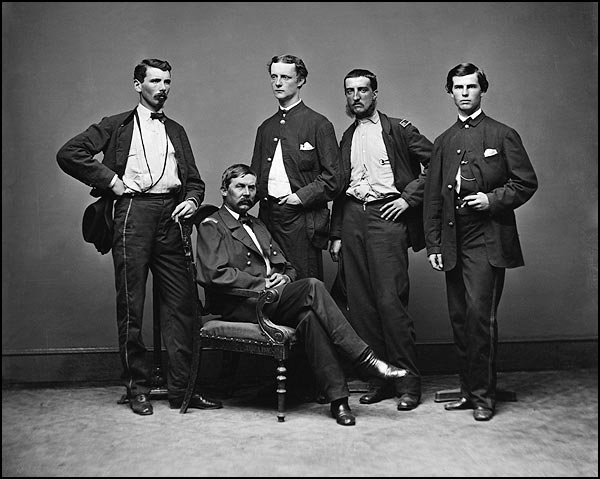|
Battle Of Boonsboro
The Battle of Boonsboro took place on July 8, 1863, in Washington County, Maryland, as part of the Retreat from Gettysburg during the Gettysburg Campaign of the American Civil War. While Gen. Robert E. Lee's Army of Northern Virginia retreated toward Virginia following its defeat in the Battle of Gettysburg, Confederate cavalry held the South Mountain passes. The cavalry fought a rearguard action against elements of the Union 1st and 3rd Cavalry Divisions and supporting infantry. This action was one of a series of successive cavalry engagements around Boonsboro, Hagerstown, and Williamsport. Battle Confederate Maj. Gen. J.E.B. Stuart faced a difficult assignment—locate the Union cavalry and prevent it from severing Gen. Lee's avenue of retreat to Williamsport and the Potomac River. The result was the biggest and most sustained cavalry battle in Maryland during the campaign. The Battle of Boonsboro occurred along the National Road on Wednesday, July 8, 1863. Stuar ... [...More Info...] [...Related Items...] OR: [Wikipedia] [Google] [Baidu] |
American Civil War
The American Civil War (April 12, 1861 – May 26, 1865; also known by other names) was a civil war in the United States. It was fought between the Union ("the North") and the Confederacy ("the South"), the latter formed by states that had seceded. The central cause of the war was the dispute over whether slavery would be permitted to expand into the western territories, leading to more slave states, or be prevented from doing so, which was widely believed would place slavery on a course of ultimate extinction. Decades of political controversy over slavery were brought to a head by the victory in the 1860 U.S. presidential election of Abraham Lincoln, who opposed slavery's expansion into the west. An initial seven southern slave states responded to Lincoln's victory by seceding from the United States and, in 1861, forming the Confederacy. The Confederacy seized U.S. forts and other federal assets within their borders. Led by Confederate President Jefferson Davis, ... [...More Info...] [...Related Items...] OR: [Wikipedia] [Google] [Baidu] |
Infantry
Infantry is a military specialization which engages in ground combat on foot. Infantry generally consists of light infantry, mountain infantry, motorized infantry & mechanized infantry, airborne infantry, air assault infantry, and marine infantry. Although disused in modern times, heavy infantry also commonly made up the bulk of many historic armies. Infantry, cavalry, and artillery have traditionally made up the core of the combat arms professions of various armies, with the infantry almost always comprising the largest portion of these forces. Etymology and terminology In English, use of the term ''infantry'' began about the 1570s, describing soldiers who march and fight on foot. The word derives from Middle French ''infanterie'', from older Italian (also Spanish) ''infanteria'' (foot soldiers too inexperienced for cavalry), from Latin '' īnfāns'' (without speech, newborn, foolish), from which English also gets '' infant''. The individual-soldier term ''infantry ... [...More Info...] [...Related Items...] OR: [Wikipedia] [Google] [Baidu] |
1863 In The United States
Events from the year 1863 in the United States. Incumbents Federal government * President: Abraham Lincoln ( R-Illinois) * Vice President: Hannibal Hamlin ( R-Maine) * Chief Justice: Roger B. Taney (Maryland) * Speaker of the House of Representatives: Galusha A. Grow ( R-Pennsylvania) (until March 4), Schuyler Colfax ( R-Indiana) (starting December 7) * Congress: 37th (until March 4), 38th (starting March 4) Events January * January 1 **President Lincoln issues the second executive order of the Emancipation Proclamation, specifying ten Confederate states in which slaves were to be freed. **The first claim under the Homestead Act is made for a farm in Nebraska. * January 3 – The Thomas Nast drawing of the modern Santa Claus appears on the cover of ''Harper's Weekly,'' although Santa existed previously. * January 8 – Ground is broken in Sacramento, California, on the construction of the First transcontinental railroad in the United States. * January 11 ... [...More Info...] [...Related Items...] OR: [Wikipedia] [Google] [Baidu] |
Battle Of Funkstown
The Second Battle of Funkstown (more commonly simply referred to as the Battle of Funkstown) took place near Funkstown, Maryland, on July 10, 1863, during the Gettysburg Campaign of the American Civil War. Union forces of the Army of the Potomac attacked the rear guard of the Confederate Army of Northern Virginia during its retreat from Pennsylvania following the Battle of Gettysburg. A strong Confederate presence at Funkstown threatened any Union advance against Gen. Robert E. Lee’s position near Williamsport and the Potomac River as he retreated to Virginia after the Battle of Gettysburg. Maj. Gen. J.E.B. Stuart’s cavalry, posted at Funkstown, posed a serious risk to the Federal right and rear if the Union army lunged west from Boonsboro. Stuart, meanwhile, determined to wage a spirited defense to ensure Lee time to complete fortifications protecting his army and his avenue of retreat. As Brig. Gen. John Buford’s Federal cavalry division cautiously approached Funks ... [...More Info...] [...Related Items...] OR: [Wikipedia] [Google] [Baidu] |
Funkstown, Maryland
Funkstown is a town in Washington County, Maryland, United States. The population was 904 at the 2010 census. History Originally were sold to Henry Funk by Frederick Calvert, 6th Baron Baltimore in 1754 and settled as ''Jerusalem''. The Civil War Battle of Funkstown took place July 10, 1863, during the Gettysburg Campaign as Robert E. Lee's Army of Northern Virginia retreated toward Virginia in the week following the Battle of Gettysburg. Union forces of the Army of the Potomac attacked the rear guard of the Confederate Army of Northern Virginia during its retreat from Pennsylvania following the Battle of Gettysburg. A strong Confederate presence at Funkstown threatened any Union advance against Gen. Robert E. Lee's position near Williamsport and the Potomac River as he retreated to Virginia after the Battle of Gettysburg. Maj. Gen. J.E.B. Stuart's cavalry, posted at Funkstown, posed a serious risk to the Federal right and rear if the Union army lunged west from Boonsboro. ... [...More Info...] [...Related Items...] OR: [Wikipedia] [Google] [Baidu] |
Division (military)
A division is a large military unit or Formation (military), formation, usually consisting of between 6,000 and 25,000 soldiers. In most armies, a division is composed of several regiments or brigades; in turn, several divisions typically make up a corps. Historically, the division has been the default combined arms unit capable of independent Military tactics, operations. Smaller combined arms units, such as the American regimental combat team (RCT) during World War II, were used when conditions favored them. In recent times, modern Western militaries have begun adopting the smaller brigade combat team (similar to the RCT) as the default combined arms unit, with the division they belong to being less important. While the focus of this article is on army divisions, in naval usage "division (naval), division" has a completely different meaning, referring to either an administrative/functional sub-unit of a department (e.g., fire control division of the weapons department) aboar ... [...More Info...] [...Related Items...] OR: [Wikipedia] [Google] [Baidu] |
John Buford
John Buford, Jr. (March 4, 1826 – December 16, 1863) was a United States Army cavalry officer. He fought for the Union as a brigadier general during the American Civil War. Buford is best known for having played a major role in the first day of the Battle of Gettysburg on July 1, 1863, by identifying, taking, and holding the "high ground" while in command of a division. Buford graduated from West Point in 1848. He remained loyal to the United States when the Civil War broke out, despite having been born in the divided border state of Kentucky. During the war he fought against the Confederate Army of Northern Virginia as part of the Army of the Potomac. His first command was a cavalry brigade under Major General John Pope, and he distinguished himself at Second Bull Run in August 1862, where he was wounded, and also saw action at Antietam in September and Stoneman's Raid in spring 1863. Buford's cavalry division played a crucial role in the Gettysburg Campaign that summer. A ... [...More Info...] [...Related Items...] OR: [Wikipedia] [Google] [Baidu] |
Brigadier General (United States)
In the United States Armed Forces, a brigadier general is a one-star general officer in the United States Army, Marine Corps, Air Force, and Space Force. A brigadier general ranks above a colonel and below a major general. The pay grade of brigadier general is O-7. It is equivalent to the rank of rear admiral (lower half) in the other United States uniformed services which use naval ranks. It is abbreviated as BG in the Army, BGen in the Marine Corps, and Brig Gen in the Air Force and Space Force. History The rank of brigadier general has existed in the U.S. military since the inception of the Continental Army in June 1775. To prevent mistakes in recognizing officers, a general order was issued on July 14, 1775, establishing that brigadier generals would wear a ribbon, worn across the breast, between coat and waistcoat, pink in color. Later, on June 18, 1780, it was prescribed that brigadier generals would instead wear a single silver star on each epaulette. At first, briga ... [...More Info...] [...Related Items...] OR: [Wikipedia] [Google] [Baidu] |
Brigade
A brigade is a major tactical military formation that typically comprises three to six battalions plus supporting elements. It is roughly equivalent to an enlarged or reinforced regiment. Two or more brigades may constitute a division. Brigades formed into divisions are usually infantry or armored (sometimes referred to as combined arms brigades). In addition to combat units, they may include combat support units or sub-units, such as artillery and engineers, and logistic units. Historically, such brigades have sometimes been called brigade-groups. On operations, a brigade may comprise both organic elements and attached elements, including some temporarily attached for a specific task. Brigades may also be specialized and comprise battalions of a single branch, for example cavalry, mechanized, armored, artillery, air defence, aviation, engineers, signals or logistic. Some brigades are classified as independent or separate and operate independently from the traditional divi ... [...More Info...] [...Related Items...] OR: [Wikipedia] [Google] [Baidu] |
National Road
The National Road (also known as the Cumberland Road) was the first major improved highway in the United States built by the Federal Government of the United States, federal government. Built between 1811 and 1837, the road connected the Potomac River, Potomac and Ohio Rivers and was a main transport path to the Western United States, West for thousands of settlers. When improved in the 1830s, it became the second U.S. road surfaced with the macadam process pioneered by Scotsman John Loudon McAdam. Construction began heading west in 1811 at Cumberland, Maryland, on the Potomac River. After the panic of 1837, Financial Panic of 1837 and the resulting economic depression, congressional funding ran dry and construction was stopped at Vandalia, Illinois, the then-capital of Illinois, northeast of St. Louis, Missouri, St. Louis across the Mississippi River. The road has also been referred to as the Cumberland Turnpike, the Cumberland–Brownsville Turnpike (or Road or Pike), the ... [...More Info...] [...Related Items...] OR: [Wikipedia] [Google] [Baidu] |
Potomac River
The Potomac River () drains the Mid-Atlantic United States, flowing from the Potomac Highlands into Chesapeake Bay. It is long,U.S. Geological Survey. National Hydrography Dataset high-resolution flowline dataThe National Map. Retrieved August 15, 2011 with a drainage area of 14,700 square miles (38,000 km2), and is the fourth-largest river along the East Coast of the United States and the 21st-largest in the United States. Over 5 million people live within its watershed. The river forms part of the borders between Maryland and Washington, D.C. on the left descending bank and between West Virginia and Virginia on the right descending bank. Except for a small portion of its headwaters in West Virginia, the North Branch Potomac River is considered part of Maryland to the low-water mark on the opposite bank. The South Branch Potomac River lies completely within the state of West Virginia except for its headwaters, which lie in Virginia. Course The Potomac River runs ... [...More Info...] [...Related Items...] OR: [Wikipedia] [Google] [Baidu] |
Major General (CSA)
The general officers of the Confederate States Army (CSA) were the senior military leaders of the Confederacy during the American Civil War of 1861–1865. They were often former officers from the United States Army (the regular army) prior to the Civil War, while others were given the rank based on merit or when necessity demanded. Most Confederate generals needed confirmation from the Confederate Congress, much like prospective generals in the modern U.S. armed forces. Like all of the Confederacy's military forces, these generals answered to their civilian leadership, in particular Jefferson Davis, the South's president and therefore commander-in-chief of the Army, Navy, and the Marines of the Confederate States. History Much of the design of the Confederate States Army was based on the structure and customs of the U.S. Army when the Confederate Congress established their War Department on February 21, 1861.Eicher, p. 23. The Confederate Army was composed of three parts; t ... [...More Info...] [...Related Items...] OR: [Wikipedia] [Google] [Baidu] |




